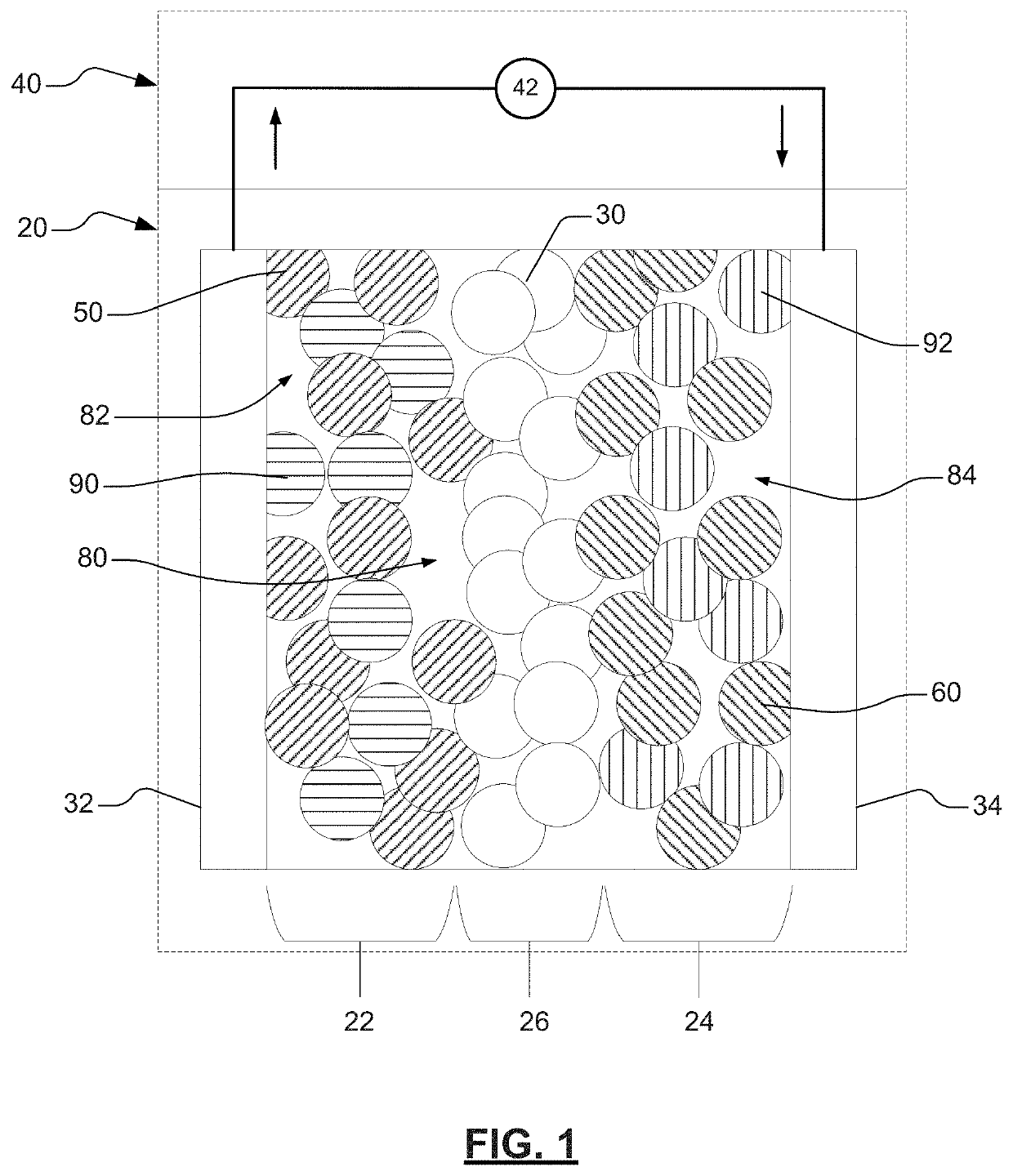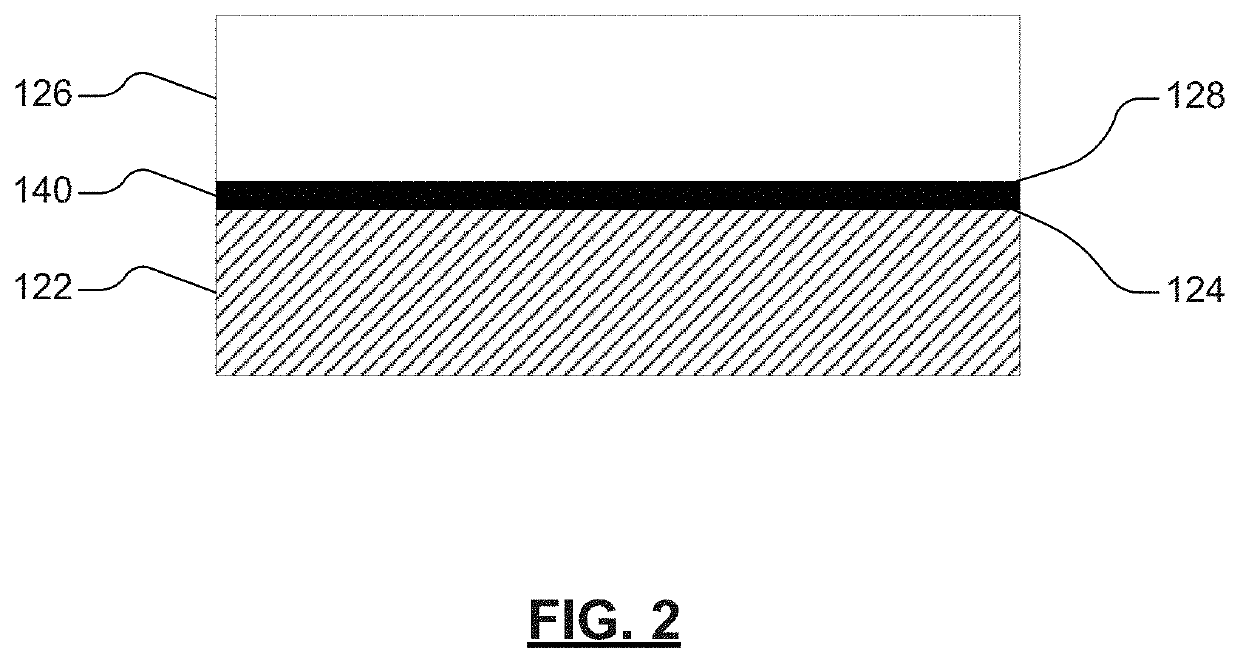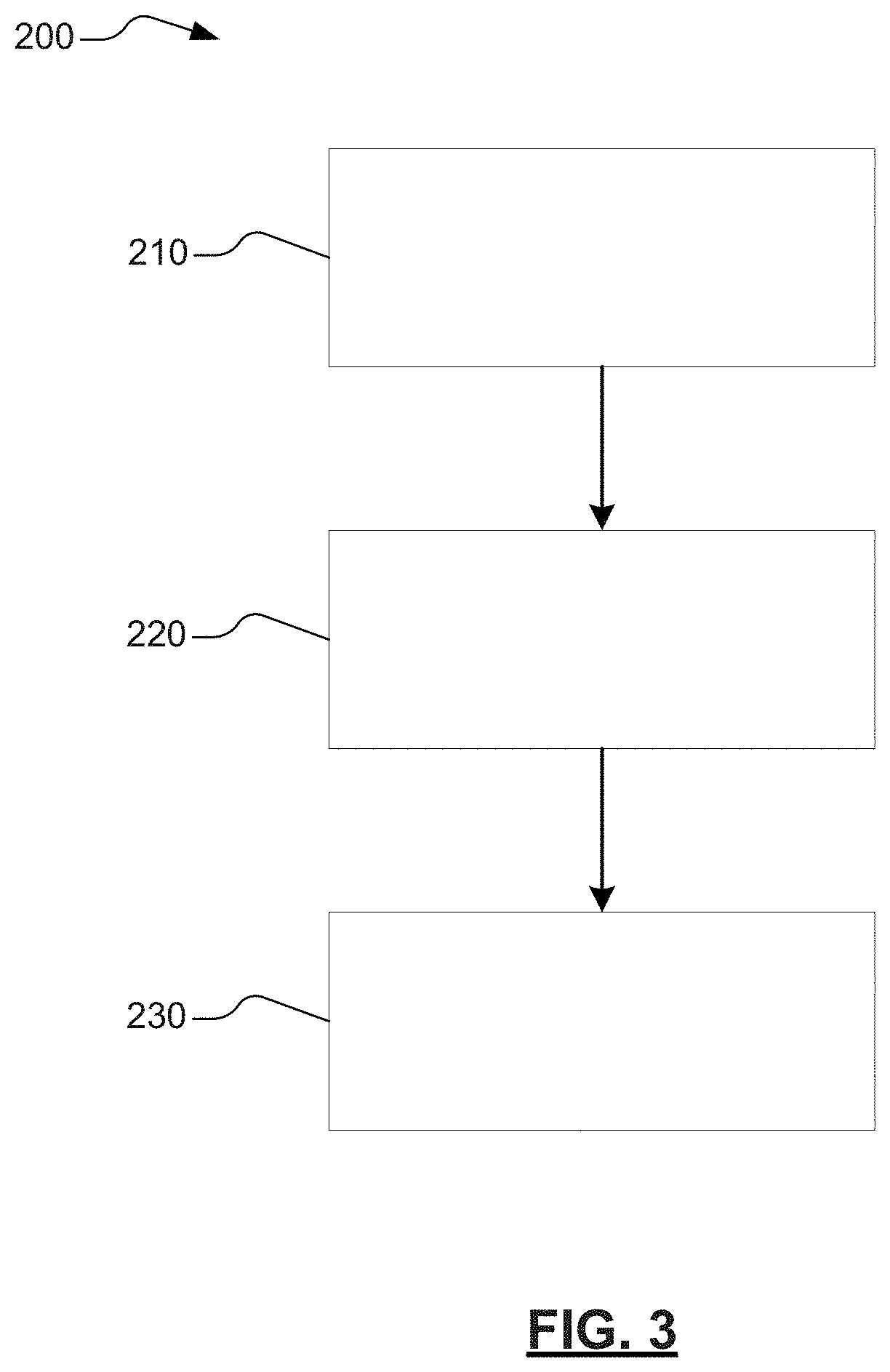Methods for forming ionically conductive polymer composite interlayers in solid-state batteries
a technology of ionically conductive polymer and composite interlayers, which is applied in the manufacture of electrodes, cell components, electrochemical generators, etc., can solve the problems of comparatively low power capability of solid-state batteries
- Summary
- Abstract
- Description
- Claims
- Application Information
AI Technical Summary
Benefits of technology
Problems solved by technology
Method used
Image
Examples
example 1
[0098]An example electrode may be prepared in accordance with various aspects of the present disclosure. The example cell may include a solid-state electrolyte layer disposed between a first electrode (e.g., first lithium-metal electrode) and a second electrode (e.g., second lithium-metal electrode). The first electrode may include a first electroactive material layer (that includes, for example, a lithium metal) disposed on or adjacent to a first current collector (that includes, for example, copper). The second electrode may include a second electroactive material layer (that includes, for example, a lithium metal) disposed on or adjacent to a second current collector (that includes, for example, copper). The first electroactive material layer and the second electroactive material layer may be substantially aligned with the solid-state electrolyte layer. For example, the first electroactive material layer may be substantially aligned with a first surface of the solid-state electro...
example 2
[0102]An example electrode may be prepared in accordance with various aspects of the present disclosure. The example cell may include a solid-state electrolyte layer disposed between a first electrode (e.g., first lithium-metal electrode) and a second electrode (e.g., second lithium-metal electrode). The first electrode may include a first electroactive material layer (that includes, for example, a lithium metal) disposed on or adjacent to a first current collector (that includes, for example, copper). The second electrode may include a second electroactive material layer (that includes, for example, a lithium metal) disposed on or adjacent to a second current collector (that includes, for example, copper). The first electroactive material layer and the second electroactive material layer may be substantially aligned with the solid-state electrolyte layer. For example, the first electroactive material layer may be substantially aligned with a first surface of the solid-state electro...
PUM
| Property | Measurement | Unit |
|---|---|---|
| ionic conductivity | aaaaa | aaaaa |
| pressure | aaaaa | aaaaa |
| thickness | aaaaa | aaaaa |
Abstract
Description
Claims
Application Information
 Login to View More
Login to View More - R&D
- Intellectual Property
- Life Sciences
- Materials
- Tech Scout
- Unparalleled Data Quality
- Higher Quality Content
- 60% Fewer Hallucinations
Browse by: Latest US Patents, China's latest patents, Technical Efficacy Thesaurus, Application Domain, Technology Topic, Popular Technical Reports.
© 2025 PatSnap. All rights reserved.Legal|Privacy policy|Modern Slavery Act Transparency Statement|Sitemap|About US| Contact US: help@patsnap.com



